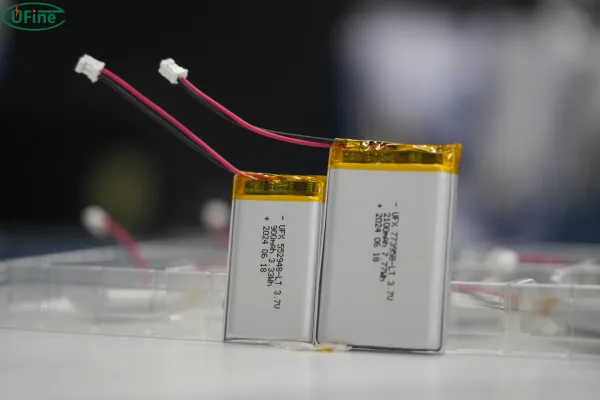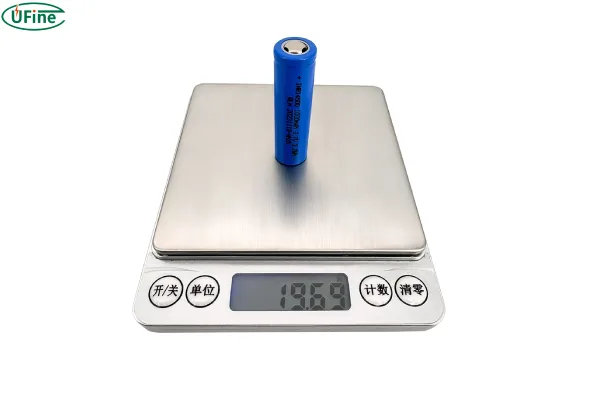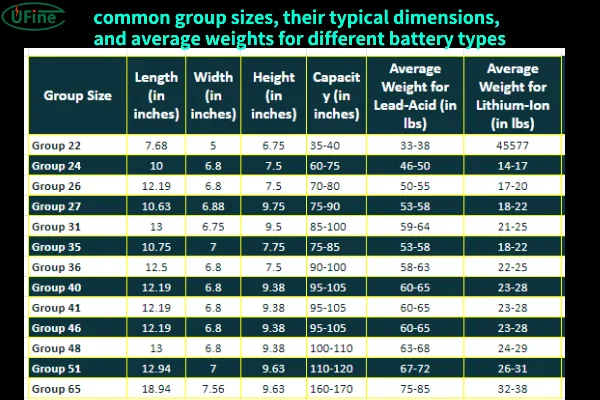The ubiquitous nature of lithium-ion batteries in modern technology necessitates a thorough understanding of their fundamental characteristics. While energy capacity, measured in milliampere-hours (mAh) for smaller batteries or ampere-hours (Ah) for larger ones, dictates a battery’s operational lifespan, its weight significantly impacts portability and overall system design. This article delves into the complex interplay between lithium-ion battery capacity and weight, examining the underlying factors that govern this relationship and exploring its implications for various applications. Furthermore, we will investigate methods for estimating capacity based on weight (with caveats) and discuss the future trajectory of LIB technology concerning energy density and weight reduction.
Part 1. What affects lithium battery capacity?
The energy capacity of a lithium-ion battery is not solely determined by its physical dimensions. Instead, it’s a multifaceted characteristic influenced by several key factors:
-
Electrode Materials: The choice of cathode and anode materials profoundly impacts energy density. High-capacity cathodes, such as nickel manganese cobalt (NMC) and lithium nickel cobalt aluminum oxide (NCA), offer superior energy storage compared to older lithium cobalt oxide (LCO) materials. Similarly, advancements in anode materials, including silicon-based anodes, aim to increase capacity beyond the limitations of traditional graphite. Moreover, the particle size and morphology of these materials influence their surface area and electrochemical reactivity, directly affecting capacity.
-
Electrolyte Composition: The electrolyte, a lithium-ion conducting medium, plays a crucial role in ion transport between the electrodes. Its composition, including the type of lithium salt, solvent, and additives, significantly impacts ionic conductivity and overall battery performance. A highly conductive electrolyte facilitates faster charge-discharge rates and potentially higher capacity utilization.
-
Cell Design and Architecture: The internal structure of the lithium-ion cell, including the electrode thickness, porosity, and separator design, influences capacity. Thicker electrodes can store more active material, but this can also lead to increased internal resistance and reduced power density. Optimizing the electrode microstructure to maximize surface area while maintaining structural integrity is critical for achieving high capacity. Furthermore, innovative cell architectures, such as pouch cells, cylindrical cells, and prismatic cells, each have unique characteristics that affect capacity and weight.
-
Manufacturing Processes: The quality control and precision of the manufacturing process are paramount. Uniform electrode coatings, precise layering, and careful assembly are essential for consistent performance and maximizing capacity. Defects in the manufacturing process can lead to reduced capacity and compromised battery life.
Part 2. What affects lithium battery weight?
The weight of a lithium-ion battery is determined by a combination of material properties and design choices:
-
Cell Chemistry and Material Density: The inherent density of the materials used in the cathode, anode, and electrolyte directly impacts the overall weight. For instance, lead-acid batteries are significantly heavier than LIBs due to the high density of lead. Even within lithium-ion batteries, different chemistries exhibit varying densities. LiFePO4 (lithium iron phosphate) batteries, while offering excellent safety and cycle life, tend to be denser than NMC or NCA batteries.
-
Cell Size and Volume: Larger cells, designed to accommodate more active material and achieve higher capacities, inherently weigh more. This is a straightforward relationship: larger volume equates to higher mass.
-
Packaging and Casing: The type of casing material – whether it’s aluminum, steel, or plastic – contributes to the overall weight. Lightweight, yet robust, casing materials are crucial for portable applications.
-
Supporting Components: Additional components such as terminals, protection circuits (PCBs), and insulation materials add to the overall weight. Minimizing the weight of these components without compromising safety and performance is an ongoing engineering challenge.
Part 3. The relationship between capacity and weight: energy density as the key
The relationship between capacity and weight is best understood through the concept of energy density. Energy density is defined as the amount of energy stored per unit of mass (Wh/kg) or volume (Wh/L). A higher energy density indicates a battery that can store more energy for a given weight or volume. Therefore, advancements in lithium-ion battery technology primarily focus on increasing energy density to achieve higher capacity without a proportional increase in weight.
The energy density of a lithium-ion battery is affected by all the factors discussed above. Improved electrode materials, optimized cell design, and advanced manufacturing techniques all contribute to higher energy density. Consequently, a battery with higher energy density will have a higher capacity for a given weight, or conversely, a lower weight for a given capacity.
Part 4. How to calculate battery capacity by battery weight?
While not exact, it is possible to estimate battery capacity based on weight using the concept of specific energy. Specific energy, measured in watt-hours per kilogram (Wh/kg), indicates how much energy a battery can store relative to its weight.
The basic formula for this calculation is:
Capacity (Wh) = Specific Energy (Wh/kg) × Weight (kg)
However, it’s crucial to note that specific energy varies depending on battery chemistry and design. For lithium-ion batteries, it typically ranges from 100 to 265 Wh/kg. This calculation provides a theoretical capacity, and real-world factors such as depth of discharge and battery age must be considered for practical applications.
Part 5. Is a fully charged battery heavier than a depleted battery?
Contrary to common belief, there is a minute weight difference between fully charged and depleted batteries. This difference, however, is so small that it’s imperceptible in everyday use.
The slight weight change occurs due to the movement of lithium ions between the cathode and anode during charging and discharging. This process involves a minuscule amount of mass being converted to energy, as described by Einstein’s E=mc² equation.
The weight difference is in the range of nanograms, requiring highly sensitive equipment to detect. For all practical purposes, this weight change is negligible and does not affect the use or performance of battery-powered devices.
Part 6. Future trend of lithium battery capacity and weight
The ongoing research and development in lithium-ion battery technology are focused on achieving even higher energy densities. This involves exploring novel materials, improving cell designs, and optimizing manufacturing processes. Some key areas of focus include:
-
Solid-State Batteries: Replacing the liquid or gel electrolyte with a solid electrolyte promises enhanced safety, higher energy density, and potentially faster charging rates.
-
Silicon Anode Technology: Silicon anodes offer significantly higher theoretical capacity compared to graphite, but challenges remain in addressing volume expansion during cycling.
-
Advanced Cathode Materials: Research continues into new cathode materials with higher energy density and improved stability.
-
Improved Manufacturing Techniques: Advanced manufacturing techniques, such as 3D printing and roll-to-roll processing, aim to improve efficiency and reduce costs while enhancing battery performance.
These advancements are expected to lead to lithium-ion batteries with significantly higher capacities and lower weights in the coming years, further expanding their applications in portable electronics, electric vehicles, and grid-scale energy storage.
Part 7. Conclusion
The relationship between lithium-ion battery capacity and weight is complex and multifaceted. While a general correlation exists, precise estimation of capacity from weight alone is unreliable. The key factor governing this relationship is energy density, which is continuously being improved through ongoing research and development. The future of lithium-ion battery technology points towards even higher energy densities, leading to lighter and more powerful batteries that will revolutionize various aspects of modern technology.
Related Tags:
More Articles

How to Choose the Best Floor Scrubber Battery for Commercial Cleaning?
Selecting the ideal floor scrubber battery ensures a long runtime, rapid charging, and minimal maintenance for efficient commercial cleaning operations.
Battery for Blower vs Battery for Leaf Vacuum: Which One Should You Choose?
Battery for blower vs leaf vacuum—learn the key differences in power, fit, and runtime to choose the right battery for your outdoor tool needs.
How to Choose the Right Battery for Blower?
Choosing the right blower battery? Consider voltage, capacity, chemistry & usage. This guide helps match the best battery for peak performance.
How to Choose the Best Insulated Battery Box for Lithium Batteries?
Choosing the Best Insulated Battery Box for Lithium Batteries? Discover key factors such as size, material, and safety for optimal protection and performance.
7 Critical Elements on a Lithium Battery Shipping Label
What must be on a lithium battery shipping label? Learn 7 key elements to ensure safety, legal compliance, and correct handling across all transport modes.






